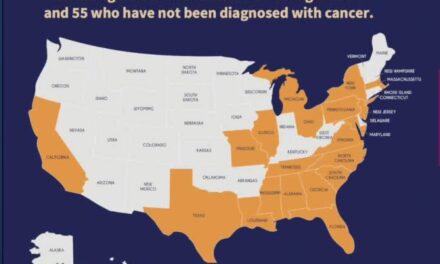
Editor’s note: The opinions expressed by the author do not necessarily reflect the opinions of the AAMC or its members.
“Black people’s nerve endings are less sensitive than white people’s.” “Black people’s skin is thicker than white people’s.” “Black people’s blood coagulates more quickly than white people’s.”
These disturbing beliefs are not long-forgotten 19th-century relics. They are notions harbored by far too many medical students and residents as recently as 2016. In fact, half of trainees surveyed held one or more such false beliefs, according to a study published in the Proceedings of the National Academies of Science. I find it shocking that 40% of first- and second-year medical students endorsed the belief that “black people’s skin is thicker than white people’s.”
What’s more, false ideas about black peoples’ experience of pain can lead to worrisome treatment disparities. In the 2016 study, for example, trainees who believed that black people are not as sensitive to pain as white people were less likely to treat black people’s pain appropriately.
I find it shocking that 40% of first- and second-year medical students endorsed the belief that “black people’s skin is thicker than white people’s.”
Other findings are equally worrisome. In a 2012 study, my colleagues and I found a correlation between pediatricians’ implicit (unconscious) racial biases and how they treated pain in a simulated African-American or white teenager following surgery: As the strength of provider implicit bias favoring whites increased, the likelihood of prescribing appropriate pain medication decreased only for the black patient. What’s more, a meta-analysis of 20 years of studies covering many sources of pain in numerous settings found that black/African American patients were 22% less likely than white patients to receive any pain medication.
Racial and ethnic disparities in pain treatment are not intentional misdeeds: health care providers do not decide that some groups deserve pain relief while others should suffer. Instead, inequities are the product of complex influences, including implicit biases that care providers don’t even know they have.
In recent years, academic medicine has made impressive strides in focusing on health care inequities, and many medical schools now make sure to teach about implicit bias. At the University of Washington School of Medicine where I work, for example, we created an online course for faculty called Implicit Bias in the Clinical and Learning Environment in 2017. So far, more than 1,000 faculty members in our five-state region have enrolled, and ongoing research shows that awareness of personal, medical, and societal implicit bias significantly increases following the course.
Despite advances, much work remains. Inadequate treatment of pain because of a patient’s race, ethnicity, gender — or any other characteristic — is simply unacceptable. Health care providers must prioritize the need to better assess and treat pain equally in all people, and educators who influence tomorrow’s physicians must ensure that any racist misinformation is dispelled.
What spurs pain treatment disparities?
Assessment and treatment of pain are complicated. People process pain differently and can express it in ways that are silent or loud, articulate or guttural, demonstrative or reserved. In addition, assessment of pain is inherently subjective. Additionally, in cases of medical ambiguity — as when pain isn’t caused by an obvious physical condition such as traumatic injury — providers rely more heavily on their own judgment, which can be influenced by personal perceptions and biases. In fact, in the meta-analysis, the greatest racial disparity in pain treatment was for conditions like backache, migraine, and abdominal pain.
Racial and ethnic disparities in pain treatment are not intentional. … Instead, inequities are the product of complex influences, including implicit biases that providers don’t even know they have.
Providers are not immune to stereotypes and images frequently portrayed in the media, which tend to associate African Americans with substance abuse. In addition, in-group bias — identifying more with one’s own group — also influences providers’ ability to assess pain. A 2019 study that asked subjects to identify pain expressed in photos found that white participants more readily recognized pain on white faces than on black faces. Although providers might like to believe that they do not harbor unconscious biases, research shows that they are just as likely as others to do so.
We all make automatic associations based on past experiences, cultural messages, and other influences without even knowing that we do so. We are in the midst of an Implicit Revolution that is bringing new insights into how our minds work, and research finds that we operate at the unconscious level much more than we ever imagined.
Toward more equitable treatment of pain
Addressing bias is not simple, but it is essential, and there are steps that individuals and institutions can take. Here are a few:
- Collect data. If bias exists, it will show up in the data. Every health care setting needs to collect data on pain management by patients’ race and ethnicity as well as gender, insurance status, and other significant characteristics. Health care systems need to review the data regularly and create strategies to address disparities.
- Identify our own biases. To address our biases, we first need to recognize them. One way to explore our automatic associations is by taking an Implicit Association Test. This also can be a valuable exercise in self-awareness and humility for our trainees, but be forewarned that the experience can provoke defensiveness. When encouraging self-examination, educators must help trainees understand that implicit bias is common even among people whose beliefs are egalitarian, that we all internalize messages from our culture, and that implicit biases are not the same as discrimination or racism. Another way to identify bias is to pay very close attention in everyday life when we notice that we have made a mistaken assumption.
- Establish educational programs. Efforts to dispel misinformation about race and pain across the medical education continuum are essential — and so is education about implicit bias. Learning about disparities in pain management can help clinicians and trainees improve their practices, and understanding that well-meaning individuals can harbor hidden biases can be humbling. To be effective, though, education about implicit bias must be grounded in science, appropriate to the audience, inclusive, and nonjudgmental. Education also must include effective strategies for reducing the impact of bias on patient care, such as using clinical guidelines and standardized checklists. Finally, institutions should evaluate the impact of implicit bias education on patient outcomes on a regular basis.
- Remove as much individual discretion as possible. Using clinical guidelines, standardized checklists, and system-wide protocols leaves less room for individual discretion — and therefore bias — to influence patient care. One valuable resource is the Centers for Disease Control and Prevention’s (CDC’s) Guideline for Prescribing Opioids for Chronic Pain. Released in 2016, the guideline addresses such vital topics as determining when to initiate opioids for chronic pain, duration of use, and dosage. The American Academy of Pain Medicine (AAPM) offers guidance for implementing the CDC guideline that covers topics such as protocols for tapering patients off opioids. Currently, the AAPM also is developing guidelines for treating specific causes of pain such as migraine and spinal surgery.
- Continue the search for objective measures of pain. Researchers are working to develop pain measures that move beyond a provider’s interpretation of a patient’s report. For example, researchers are developing a blood test using biomarkers that can objectively diagnose pain and its intensity. This promising research will help reduce the likelihood that hidden biases influence the treatment of pain.
As a nation, we must continue to reckon with the lingering history of racism in medicine. We in academic medicine have a duty to bring to light racist misinformation, stereotypes, and unconscious attitudes that contribute to disparities in patient care today. Dramatically reducing, and perhaps even eliminating, racial and ethnic disparities in pain treatment is an attainable goal — and a moral imperative.




